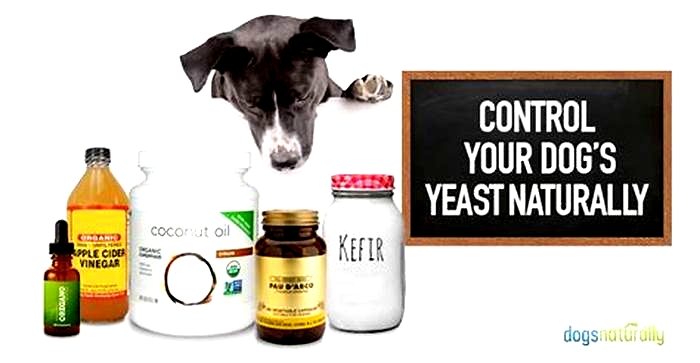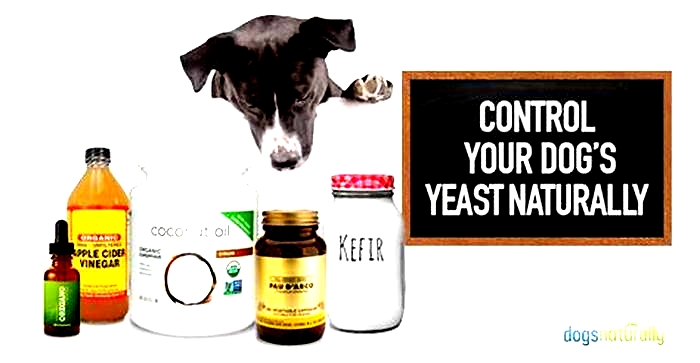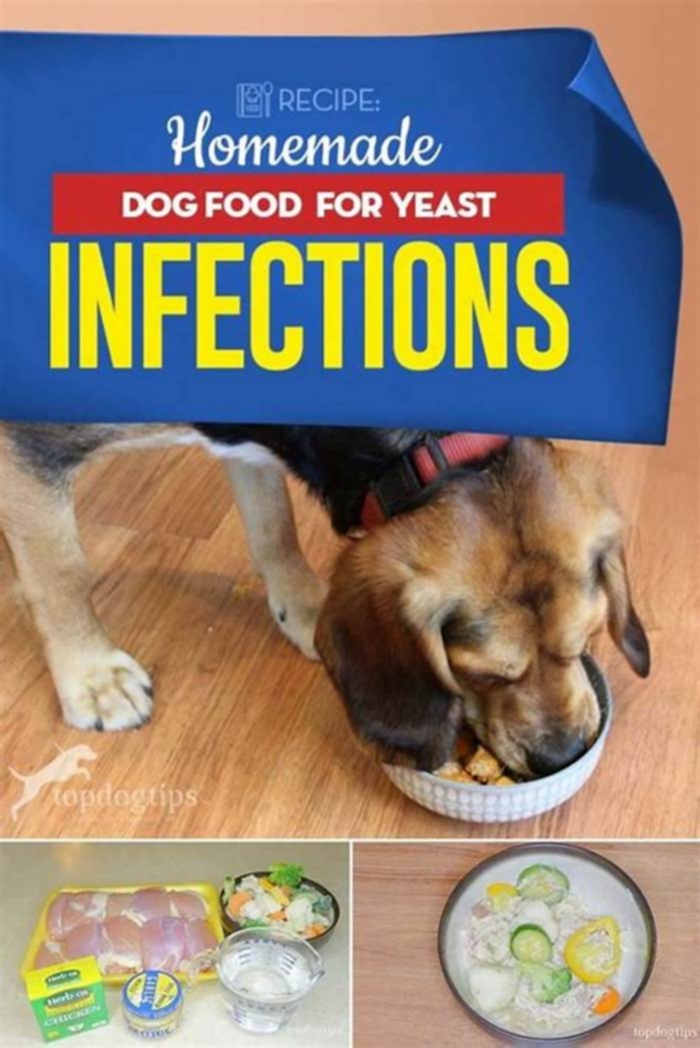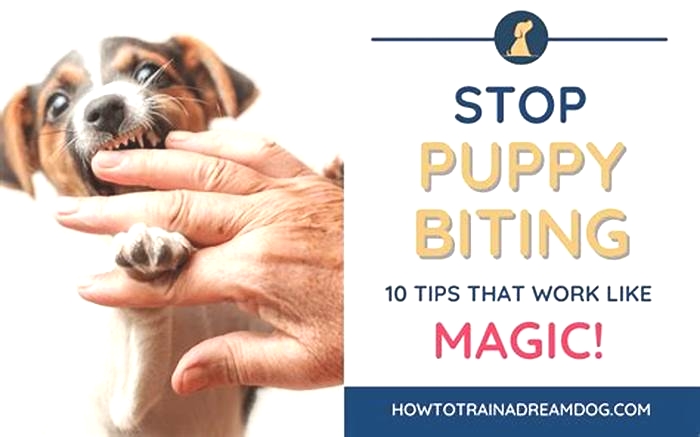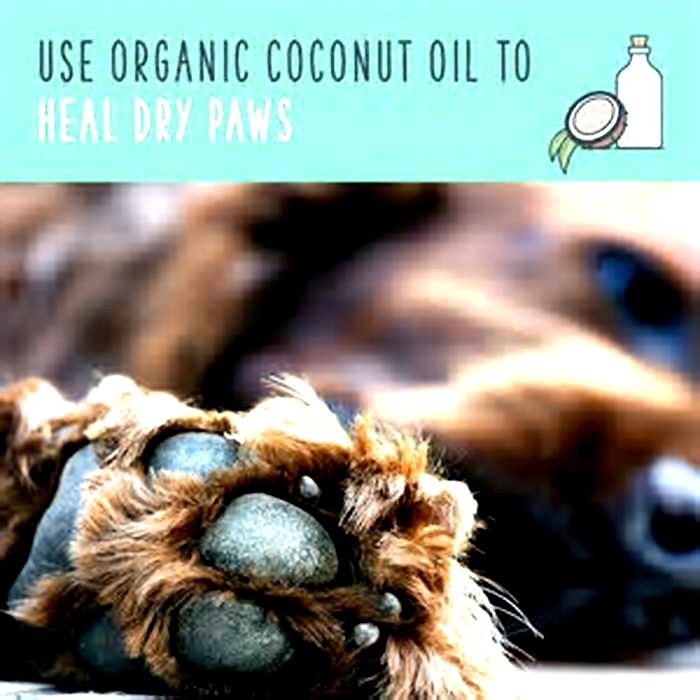How to stop yeast in dog s paws naturally
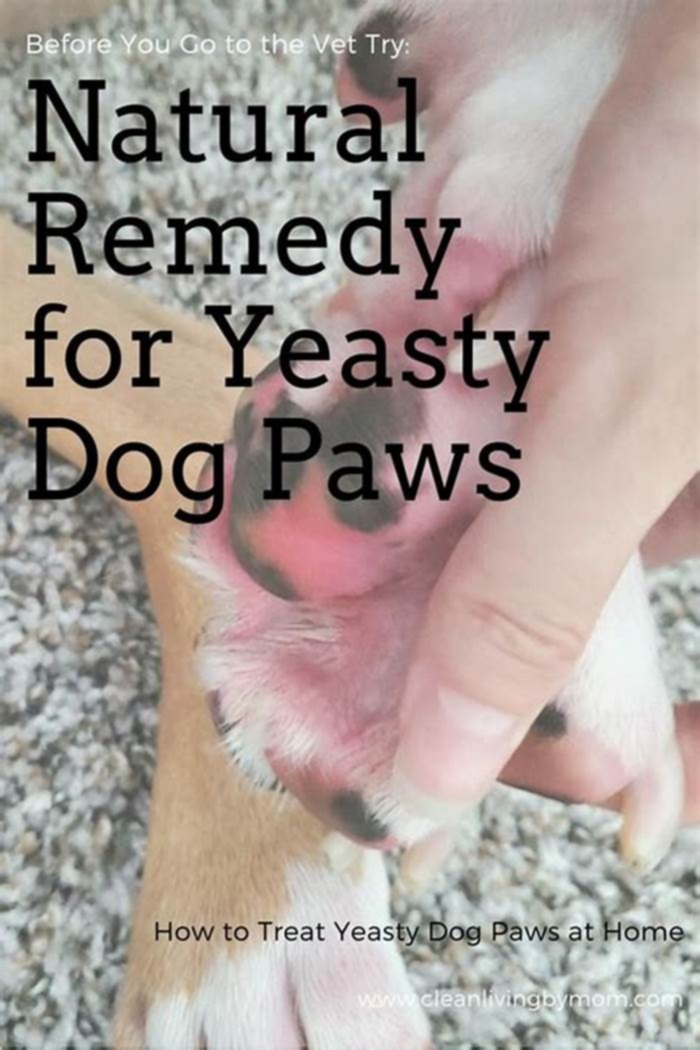
How to treat a yeast infection in dog paws
Yeast infections in dog paws, particularly with specific breeds, are common but not inevitable. These steps will help you protect your pups paws from a yeast infection.
Make it a habit
Always dry your dogs paws off when they come in from a walk or the outdoors. This step is especially important during rainy seasons when your puppys paws are more likely to get wet.
Yeast and other types of fungus can thrive in damp environments, which is where a quick drying routine can come in handy. The less time your pup spends wet, the better whether theyre a bit damp on the back from a rainy walk or swim or splashed through a puddle on the way home.
Be thorough
As you dry your pup, spend time getting between the toes and take a few minutes when youre done to ensure theyre not licking after you dry them off. A no-heat blow dry set to the low setting can be useful, and so can plush dog-only towels.
We want to note that simply letting your dog walk it off may not dry their feet. A walk or hike after prolonged exposure to dampness may actually cause more irritation, and your dog will start to lick their paws when you get them back to the house which can fuel the growth of yeast.
Take a bath
Regular cleaning and baths can help prevent an inflammatory skin condition or yeast overgrowth. Again, make sure your pup is dry after youre done. Dont be afraid to go back over with the towel a few times until your dog is completely dry to the touch.
Watch for licking
If youre worried about a possible dog paw yeast infection, its essential to prevent your dog from licking their paws. The saliva from a dogs mouth easily gets trapped between the toes, leading to a moist environment for yeast to thrive.
Look for other symptoms
When theres a yeast infection involved, you might see certain symptoms that can co-occur, such as hair loss around their paw pads and red, angry-looking skin folds. It might be time to book a vet visit if you notice this or a cheesy, bread-like smell coming from your dogs pads.
Consider allergy testing
If your dog seems to get a never-ending stream of yeast infections, there might be something more at play. Consider taking the time to rule out allergy issues. If your dog does have allergies, they can be more prone to yeast infections which can escalate to a range of symptoms. Being aware of this possibility; diagnosing accurately, and knowing the signs of an allergic reaction can save your dogs life.
Work with your vet on a treatment plan
If your dog has an underlying condition, like a weakened immune system, work with your vet to manage it. Should your dog develop a yeast infection regardless of underlying conditions its important to seek prompt care.
Dont forget that the skin is an organ
Healthy skin is important to your pets health! Like the immune system, the skin protects our bodies, including internal tissue. A dogs skin regulates body temperature, and absorbs or secretes materials into and out of the environment. Skin is also one of the primary sensory organs.
A dogs skin is also a sensitive organ, and mild inflammation can cause discomfort and impact their quality of life. Pets can be susceptible to thousands of different skin conditions, varying from fungal to parasitic, or even bacterial or viral infections. The range of danger can escalate when an infection or threat is left unaddressed, compromising your furry friends quality of life. Its never just a skin thing. Its always vet-worthy!
Yeast Infections in Dogs
What Are Yeast Infections in Dogs?
Does your dog frantically itch their skin? Have you noticed a bad smell or greasy fur when you pet them?
If so, they may have a yeast infection.
Yeast are fungal organisms that normally live on a dogs skin without causing problems. However, when a dogs immune system weakens or an underlying health condition, such as hypothyroidism, is present, yeast can overgrow and cause an infection.
The yeast that commonly causes skin infections in dogs is Malassezia, which grows on warm, moist areas of the skin. Yeast infections cause extreme itchiness and changes to the skin, such as thickening and discoloration over time.
Yeast infections in dogs are common among pups of all ages.
While yeast infections in dogs are not considered medical emergencies, they should be treated by a veterinarian immediately to prevent symptoms from worsening. If left untreated, yeast infections can cause extreme discomfort, which can lead to a decreased appetite and lethargy, necessitating prompt veterinary care.
Because yeast infections typically develop secondary to an underlying illness or suppressed immune system, they are not contagious among dogs or to pet parents.
Types of Yeast Infections in Dogs
Yeast infections can affect various areas of the skin, including the ears, skin folds, paws, armpits, vulva, and groin.
EarsYeast infections of the earalso referred to as yeast otitiscause a thick, brown discharge and strong odor in the ear canal. Affected dogs repeatedly scratch their ears to try to relieve the discomfort. They may also shake their heads and develop a head tilt. Ear infections are commonly related to food allergies.
SkinYeast dermatitis refers to a yeast infection anywhere on the skin. Affected dogs have a musty odor, greasy coat, flaky or thickened skin, and hair loss. They tend to lick the affected areas of the body, which leads to brown discoloration of the skin over time.
Dermatitis, which is often due to allergies or a suppressed immune system, can affecta dogs skin folds, armpits, vulva, and groin.
PawsYeast infections that affect the paws are generally related to environmental allergies, such as allergies to grass or pollen. Dogs constantly chew or lick their itchy paws, which leads to brown discoloration between the paw pads. Over time, open sores can develop on the paws.
Symptoms of Yeast Infections in Dogs
Signs of yeast infections in dogs can vary depending on what area of the body is affected.
Symptoms of yeast otitis may include:
Symptoms of yeast dermatitis may include:
Itchy skin
Small, red bumps on the skin
Brown discoloration of the skin
Frequent licking or chewing of the affected area
Greasy hair coat
Thickened skin
Strong odor
Symptoms of a yeast infection affecting the paws may include:
Licking and chewing the paws
Brown discoloration of the skin and fur
Red, moist areas between the paw pads
Causes of Yeast Infections in Dogs
Yeast is opportunistic, which means that although it is naturally present on the skin, it can cause an infection when conditions are favorable.
Yeast infections in dogs can develop if a pup has a weak immune system or an underlying health condition. Underlying environmental or food allergies can predispose dogs to developing yeast infections.
Skin parasites, including fleas and mites, can cause dogs to repeatedly itch their skin, which disrupts the normal skin barrier, making an infection more likely.
Some breedssuch as Pit Bulls, Boxers, and Cocker Spanielsare more frequently affected by yeast infections.
How Veterinarians Diagnose Yeast Infections in Dogs
A vet may use several tests to diagnose a yeast infections in dogs.
First, they will gather a through medical history, including when the symptoms started, if your pet is taking any medications, and if they have previously been diagnosed with any health conditions.
Next, your veterinarian will perform a full physical exam to check your dogs overall health. They may also perform blood work to check for any abnormalities.
Additional tests will depend on what your veterinarian finds during the initial exam, but may include the following:
Tape impressionDuring this test, your vet presses a piece of clear tape to the affected area of skin to collect a sample. Its then stained and examined under a microscope to identify yeast.
CytologyA cotton swab is used to collect a sample from the affected area, and it is then rubbed gently onto a microscope slide. The sample is then stained and examined under a microscope to look for yeast.
CultureA sterile cotton swab is used to collect a sample from the affected area. It is then sent to a lab to identify the type of organism present.
Skin biopsyFor chronic infections or those that are unresponsive to treatment, a small sample of skin can be taken and sent to a lab for a more accurate diagnosis.
Treatment of Yeast Infections in Dogs
Treatment for yeast infections in dogs will depend on the location and severity of the infection. Yeast dermatitis is often treated with antifungal medications and prescription shampoos.
If the infection affects only one area, a topical medication may be all that is needed. For more widespread infections, oral medications and frequent bathing can help resolve the issue.
Yeast otitis is typically treated with topical antifungal medications and steroids to reduce inflammation. Your veterinarian may recommend that you use a medicated ear wash prior to instilling ear medications.
Paw yeast infections may benefit from medicated antifungal wipes and oral medications, including antifungals and steroids.
Recovery and Management of Yeast Infections in Dogs
Because yeast infections in dogs often develop secondary to another health condition, they will not resolve without veterinary treatment.
Determining the underlying cause of the yeast infection and treating it accordingly improves treatment success. For example, if your dog has an underlying food allergy, an accurate diagnosis and treatment can help their skin improve.
It can take a few weeks to a few months for a yeast infection to fully resolve, depending on the severity. Most dogs start to feel relief from their symptoms in a week or two, but it can take several additional weeks for a pet parent to notice significant improvement to their skin and coat.
Prevention of Yeast Infections in Dogs
Ensuring your dog receives regular preventive care and vaccinations keeps them healthy and less likely to develop infections.
Additionally, health conditions that can lead to yeast infections in dogs can be caught and managed early during routine wellness visits.
Yeast Infections in Dogs FAQs
What food causes yeast infections in dogs?
Most of the food ingredients that cause allergies in dogs are proteins. Chicken is the most common food allergen related to yeast infections.
What happens if dog yeast infections go untreated?
If a dogs yeast infection is left untreated, it will progressively worsen and lead to extreme discomfort. Over time, the discomfort can cause the dog to become very sick.
What should I feed my dog when they have a yeast infection?
Unless the yeast infection is due to an underlying food allergy, its generally fine to continue your dogs usual diet. However, it is best to follow your veterinarians recommendations when deciding what to feed your dog.
Featured Image:SerhiiBobyk/iStock / Getty Images Plus via Getty Images
WRITTEN BY
Brittany Kleszynski, DVMVeterinarian
Dr. Brittany Kleszynski is a veterinarian and freelance medical writer who specializes in creating meaningful content that engages readers...
Yeast Infections in Dogs: What to Know
Yeast infections in dogs are common, especially in certain breeds or dogs with underlying conditions and compromised immune systems. While they can occur anywhere on the skin, they are often seen in your dogs ears. Early diagnosis and treatment are key to preventing serious complications. Heres what to know about yeast infections in dogs to keep your dog healthy.
What Causes a Yeast Infection in Dogs?
Yeast is a live, single-celled microorganism classified as a member of the fungus kingdom. Its normally found on every dogs skin, but in small amounts. A yeast infection occurs when a substantial amount of yeast excessively builds up in one area.
Yeast infections often occur if there is an underlying medical condition, such as food sensitivities, environmental factors, or parasites, such as fleas, which can cause allergies, as well as the dermatological condition seborrhea. Bacterial infections or underlying hormonal problems may also throw the skins defenses off-balance. In the case of yeast infections of the ear, the most common causes are water or debris trapped in the ear or food sensitivities. Yeast infections of the ear could also be caused by underlying mechanical issues such as damage to the eardrum, a polyp, or even a mass or tumor in the ear canal.
Are Some Breeds More Susceptible to Yeast Infections?
Certain dog breeds are thought to be genetically predisposed to developing yeast infections. These breeds include the West Highland White Terrier, Basset Hound, Cocker Spaniel, Silky Terrier, Australian Terrier, Maltese, Chihuahua, Poodle, Shetland Sheepdog, Lhasa Apso, and Dachshund.
Dogs with floppy ears who swim often, such as Golden Retrievers and Labrador Retrievers, are more likely to get yeast infections. Breeds such as Miniature Schnauzers, Bichon Frise, and Shih Tzu are also more susceptible to infections because the thick hair in their ear canals hampers the airflow necessary to keep ears dry.
Any dog with allergies is also more likely to develop yeast infections.
Types of Yeast Infections in Dogs and How to Recognize Them
Yeast Infections in Ears
The ear canal of a dog is L-shaped, dropping down and toward the head. This dark, warm, moist environment is the perfect setting for a yeast infection to thrive. The two types of yeast most often found in a dogs ears are Candida and Malassezia.
Yeast infections can occur in any part of the dogs ear. A dog with a yeast infection in their ear may exhibit these symptoms:
- Scratching and digging at the ear
- Rubbing the head on the floor, walls, or furniture
- Excessive shaking of the head
- Musty odor
- Brown, yellow, or bloody discharge
- Crusted skin or fur on the ear flap
- Swelling and redness
- Hair loss around the base of the ear
Early diagnosis and treatment of a yeast infection in the ears are critical before it spreads deeper. If a yeast infection spreads deeper into the ear, it can cause serious pain and complications, such as loss of hearing, vestibular imbalance, or neurological damage.
Yeast Infections on Paws
A dogs paws are susceptible to yeast infections because they encounter wet, dirty ground, which means moisture and dirt are likely to be trapped between the toes and pads. Contact with grass and weeds can also trigger allergies or result in cuts and scratches. Dogs are likely to lick their irritated paws, which doesnt help, instead adding even more moisture.
If your dog has a yeast infection on the paws, you may see the following symptoms:
Excessive licking and chewing of the feet
- Redness and irritated skin
- Brown discharge in nailbeds
- Pink salivary staining on the hair around the paws
- Hair loss
There could be many reasons a dog excessively licks their paws, including anxiety, boredom, injury, parasites, bacteria, or allergies, including food sensitivities. Early examination, diagnosis, and appropriate treatment by a veterinarian can relieve discomfort and prevent complications. This is made using a combination of their medical history and diagnostic swabs of the debris or accompanying cells.
Yeast Infections on Skin
Yeast dermatitis, a skin inflammation caused by yeast infections, can spread to any area of a dogs skin. But its most likely to occur at the site of a rash or wherever there are skin folds that can trap moisture. Wrinkly breeds, such as the Chinese Shar-Pei, are especially vulnerable.
Symptoms of yeast infections of the skin include:
- Intense itching
- Red, irritated, inflamed skin
- Greasy, crusty, or flaky patches
- Thickening (elephant-like) skin
- Darker skin color
- Hair loss
- Musty smell
Although a yeast infection of the skin may start in a very specific area, if left untreated, it can spread and affect the entire body, including the dogs face and mouth. Often, there may be a secondary bacterial infection accompanying the yeast infection.
How to Treat Yeast Infections in Dogs
Depending on how deep in the ear canal a yeast infection is, the treatment will vary. The veterinarian will prescribe a topical antifungal cream for an infection in the outer ear. An infection of the middle ear may require antifungal drops or oral medication. The vet is likely to recommend a thorough cleaning of the ear and possibly ongoing treatment with ear-drying solutions.
Yeast infections on the paws may require treatment with a disinfectant spray to kill germs, as well as daily application of a topical antifungal lotion or spray. It may also be necessary to use an Elizabethan collar to keep the dog from licking the paws so they can stay dry while they heal.
Skin infections may require topical and oral treatment. Cleansing shampoos may clean up the greasy skin. Your vet may recommend using a medicated, antifungal shampoo and leaving it on the dogs skin for about 10 minutes. Bathing may need to be repeated for up to 12 weeks. The veterinarian will also prescribe an antifungal medication, as well as an antibiotic, to treat any bacterial skin infection that may occur along with yeast dermatitis.
How to Prevent Yeast Infections in Dogs
The good news is that yeast infections in dogs are not contagious to other dogs or humans. The most important thing to remember to prevent yeast infections is to keep the area clean and dry.
Too much moisture is a common cause of ear infections, so thoroughly drying your dogs ears after swimming and bathing can prevent moisture build-up. If your dog has a skin rash, musty smell, or is scratching or licking excessively, taking them to the veterinarian can prevent an infection from spreading and becoming more serious.
The prognosis for yeast infections is good when you follow the treatments your veterinarian gives you. Its important to understand that unless an underlying problem such as allergies, hypothyroidism, or seborrhea is controlled, a yeast infection is likely to come back.




